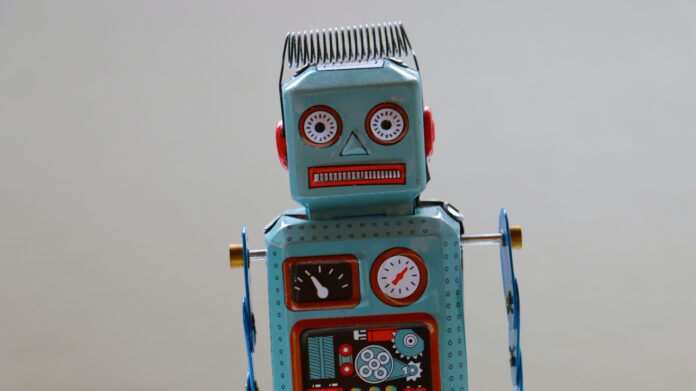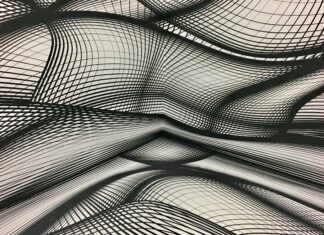RVC GUI, which stands for Robot Visual Control Graphical User Interface, is a software tool used in the field of robotics to facilitate the design, simulation, and control of robotic systems. It provides a user-friendly interface that allows users to graphically create and manipulate control structures for robots, making it easier to develop and test control algorithms. RVC GUI is widely used in research and development environments, as well as in educational settings to teach robotics concepts.
The RVC GUI offers a range of features and functionalities that contribute to its usefulness in the robotics domain. One of its key capabilities is the ability to create and edit control graphs visually. A control graph is a representation of the control architecture for a robot, depicting the flow of information and control signals between different components. With the RVC GUI, users can drag and drop various components onto the graph canvas, connect them, and configure their properties. This graphical approach simplifies the process of designing control architectures and allows users to easily visualize the structure of their control systems.
Another important feature of the RVC GUI is its simulation capabilities. Once a control graph is created, users can simulate the behavior of the robot by providing inputs and observing the outputs. This allows for the evaluation and testing of control algorithms before deploying them on a physical robot. Simulation in the RVC GUI is typically performed in a physics-based environment, where users can model the dynamics of the robot and its interaction with the environment. By simulating the robot’s behavior, users can fine-tune their control algorithms, verify their correctness, and assess their performance under different conditions.
The RVC GUI also supports the generation of code from the designed control graphs. This feature enables users to automatically generate implementation code in programming languages such as C or MATLAB. The generated code reflects the control architecture and can be deployed on the actual robot hardware, facilitating the translation of the control design into a real-world implementation. This code generation capability saves time and effort by eliminating the need to manually translate the control graph into executable code, ensuring a more efficient development process.
Furthermore, the RVC GUI provides various visualization tools to aid in the analysis and debugging of control systems. Users can monitor the behavior of individual components in real-time, view sensor data, and visualize the robot’s state during simulation or execution. These visualization features help users gain insights into the inner workings of their control systems, identify potential issues, and make improvements as needed.
In summary, the RVC GUI is a powerful software tool for designing, simulating, and controlling robotic systems. Its graphical interface simplifies the creation and manipulation of control architectures, while simulation capabilities enable testing and evaluation before deployment. The code generation feature facilitates the implementation of control designs on physical robots, and visualization tools aid in analysis and debugging. The RVC GUI is a valuable resource for researchers, developers, and educators working in the field of robotics.
Now, let’s dive into the list of five important things about RVC GUI:
1. User-Friendly Graphical Interface: The RVC GUI provides a user-friendly graphical interface that simplifies the design process of control architectures. With drag-and-drop functionality, users can easily create and connect components to construct control graphs, making it accessible to both novice and experienced users.
2. Simulation Capabilities: RVC GUI offers powerful simulation capabilities, allowing users to evaluate and test control algorithms in a virtual environment. By providing inputs and observing outputs, users can assess the behavior of their control systems, fine-tune algorithms, and verify their correctness before deploying them on physical robots.
3. Code Generation: RVC GUI supports the automatic generation of code from the designed control graphs. This feature saves time and effort by eliminating the need for manual translation of the control design into executable code. Generated code can be implemented on the physical robot hardware, facilitating the seamless transition from the design phase to the real-world implementation, promoting efficiency in the development process.
4. Visualization Tools: The RVC GUI provides various visualization tools that aid in the analysis and debugging of control systems. Users can monitor the behavior of individual components, visualize sensor data, and observe the robot’s state during simulation or execution. These visualizations offer valuable insights into the inner workings of the control system, facilitating the identification of issues and enabling users to make necessary improvements.
5. Educational Value: The RVC GUI serves as a valuable educational tool for teaching robotics concepts. Its intuitive interface and visual representation of control architectures make it an excellent platform for introducing students to the principles of robotics and control systems. By using the RVC GUI, students can gain hands-on experience in designing and simulating control systems, fostering their understanding of robotics and enhancing their problem-solving skills.
The RVC GUI is a versatile software tool that provides a user-friendly interface for designing, simulating, and controlling robotic systems. Its graphical capabilities simplify the creation of control architectures, while simulation features enable the evaluation and testing of control algorithms. Code generation capabilities facilitate the implementation of control designs on physical robots, and visualization tools aid in analysis and debugging. With its broad range of functionalities, the RVC GUI is a valuable resource for researchers, developers, and educators in the field of robotics.
RVC GUI, which stands for Robot Visual Control Graphical User Interface, is a software tool used in the field of robotics to facilitate the design, simulation, and control of robotic systems. It provides a user-friendly interface that allows users to graphically create and manipulate control structures for robots, making it easier to develop and test control algorithms. RVC GUI is widely used in research and development environments, as well as in educational settings to teach robotics concepts.
The RVC GUI offers a range of features and functionalities that contribute to its usefulness in the robotics domain. One of its key capabilities is the ability to create and edit control graphs visually. A control graph is a representation of the control architecture for a robot, depicting the flow of information and control signals between different components. With the RVC GUI, users can drag and drop various components onto the graph canvas, connect them, and configure their properties. This graphical approach simplifies the process of designing control architectures and allows users to easily visualize the structure of their control systems.
Another important feature of the RVC GUI is its simulation capabilities. Once a control graph is created, users can simulate the behavior of the robot by providing inputs and observing the outputs. This allows for the evaluation and testing of control algorithms before deploying them on a physical robot. Simulation in the RVC GUI is typically performed in a physics-based environment, where users can model the dynamics of the robot and its interaction with the environment. By simulating the robot’s behavior, users can fine-tune their control algorithms, verify their correctness, and assess their performance under different conditions.
The RVC GUI also supports the generation of code from the designed control graphs. This feature enables users to automatically generate implementation code in programming languages such as C or MATLAB. The generated code reflects the control architecture and can be deployed on the actual robot hardware, facilitating the translation of the control design into a real-world implementation. This code generation capability saves time and effort by eliminating the need to manually translate the control graph into executable code, ensuring a more efficient development process.
Furthermore, the RVC GUI provides various visualization tools to aid in the analysis and debugging of control systems. Users can monitor the behavior of individual components in real-time, view sensor data, and visualize the robot’s state during simulation or execution. These visualization features help users gain insights into the inner workings of their control systems, identify potential issues, and make improvements as needed.
In summary, the RVC GUI is a powerful software tool for designing, simulating, and controlling robotic systems. Its graphical interface simplifies the creation and manipulation of control architectures, while simulation capabilities enable testing and evaluation before deployment. The code generation feature facilitates the implementation of control designs on physical robots, and visualization tools aid in analysis and debugging. The RVC GUI is a valuable resource for researchers, developers, and educators working in the field of robotics.


















